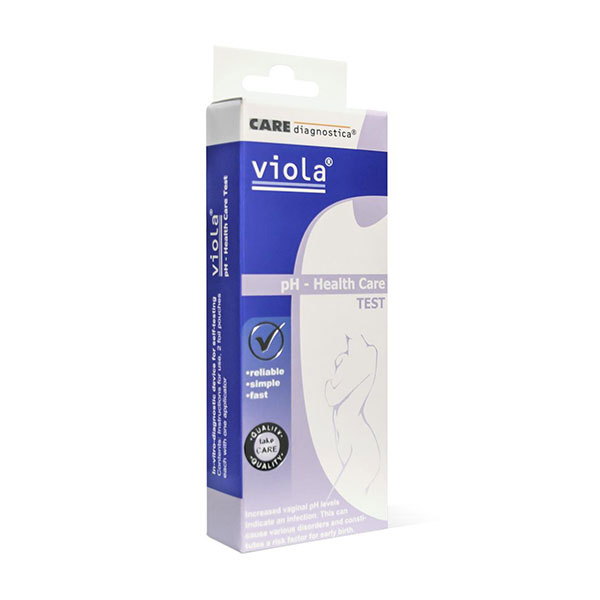- We Stand by You
- +230 5 944 0408
- info@microcare.mu



viola ph Health Care Test
Description
An acidic vaginal pH value of 3.8 to 4.5 is a basic requirement for the optimal functioning of the body's own system protecting the vagina. This system can effectively avoid colonisations by pathogens and the occurrence of vaginal infections. The most important and most natural protection against vaginal problems is therefore a healthy vaginal flora. There are many factors that regulate the composition and dynamics of the vaginal microbial ecosystem and that maintain the natural protective functions of the vagina.
One important factor is lacto bacteria. Under the influence of lacto bacteria, the glycogen released from the upper vaginal wall degrades to form the sugar glucose and then lactic acid. This results in an acid environment forming in the vagina, with a pH value that is usually 3.8 to 4.5. The physiological vaginal pH level is dependent on the quantitative presence of the lactic acid.
This acidic vaginal environment forms effective protection against infections because the vast majority of bacteria that cause disease cannot thrive under such conditions.
The pH level in vagina is subject to fluctuations. Possible causes of an alteration in the vaginal pH level are:
- bacterial vaginosis
- bacterial mixed infections
- sexually transmitted diseases
- premature rupture of fetal membranes
- estrogen deficiency
- postoperative infected wounds
- excessive intimate care
A physiological and therefore normal pH level (pH 3.8 to 4.5) is important for the body's system of protecting the vagina and the maintenance of a healthy vaginal flora. An increase in the vaginal level:
- decreases the quality of women's life who are affected by this
- constitutes a significant risk to health
- increases the risk of premature delivery
viola pH Health Care Test is the modern concept of protection for women
A disturbance in the micro ecological balance in the vagina (e.g. dysbiosis) is often connected with an increase in the pH level. Vaginal pH levels that are higher than 4.5 can lead to many gynaecological complaints and compilations.
Pregnant women can decrease the risk of infections by regularly self-assessing the vaginal pH level.
Facts
Contents: 2, 3, 5 or 10 foil pouches, each with one applicator, instruction for use
Methodology: Rapid test for visual evaluation
Sample type: vaginal sample
